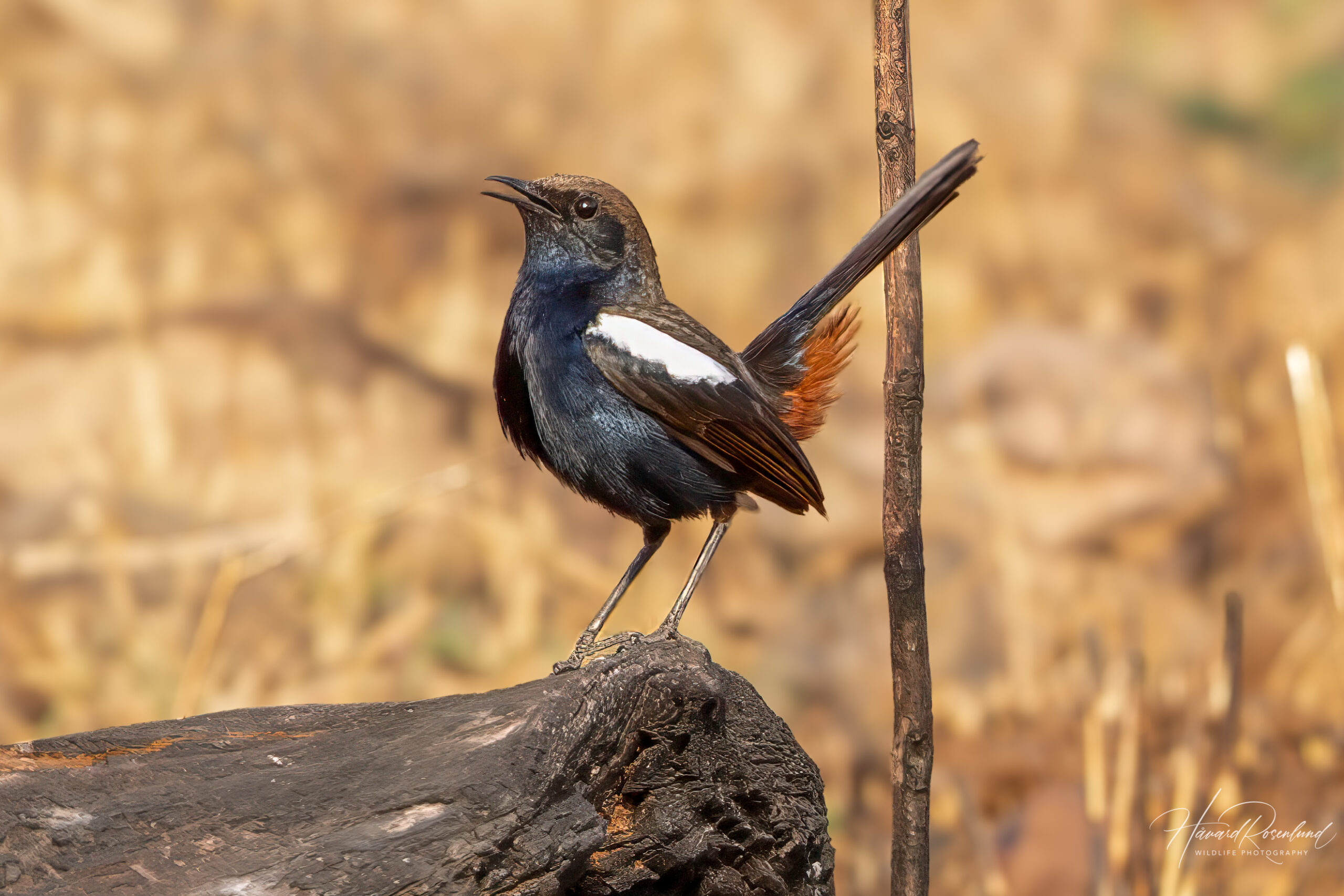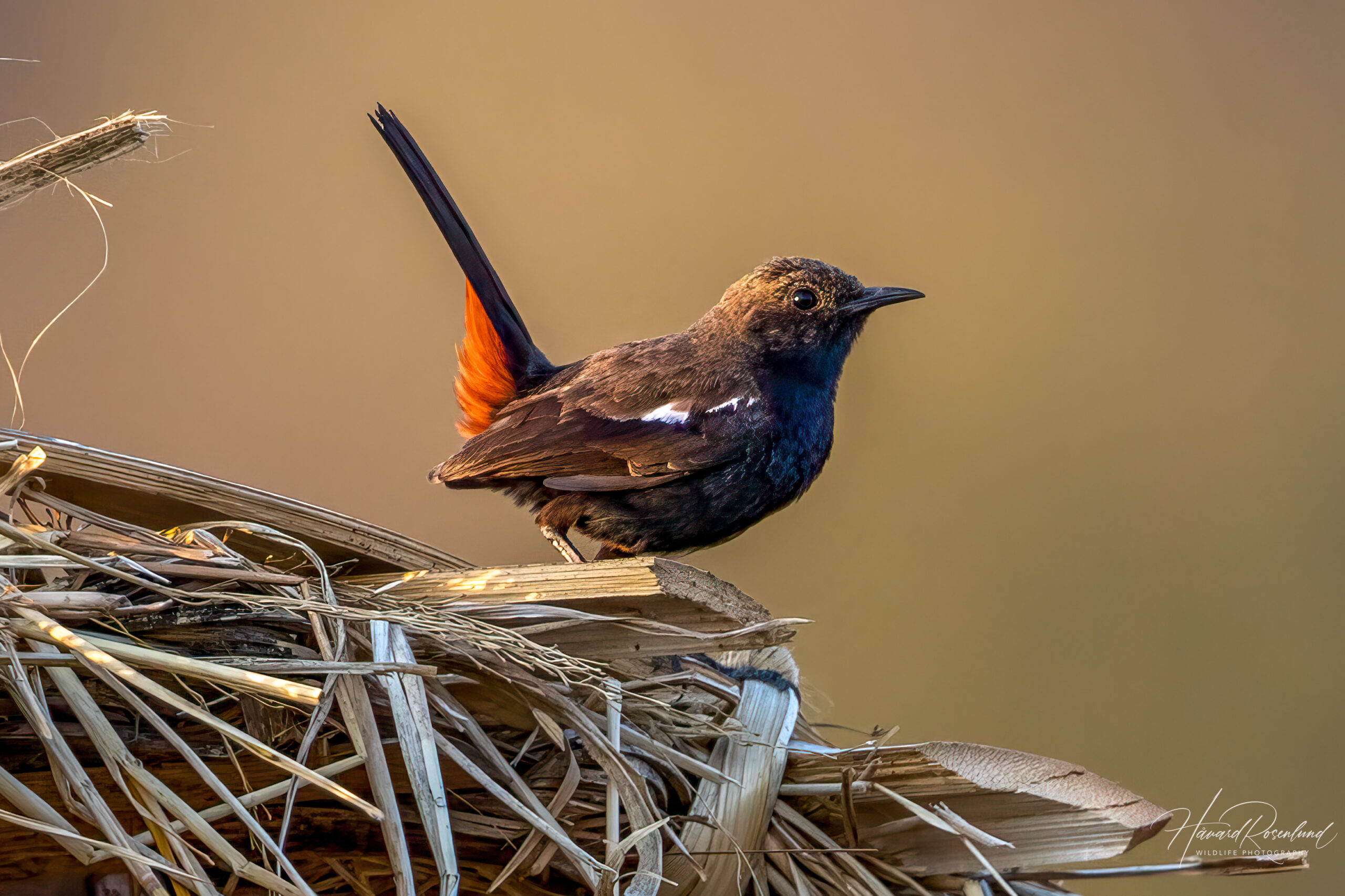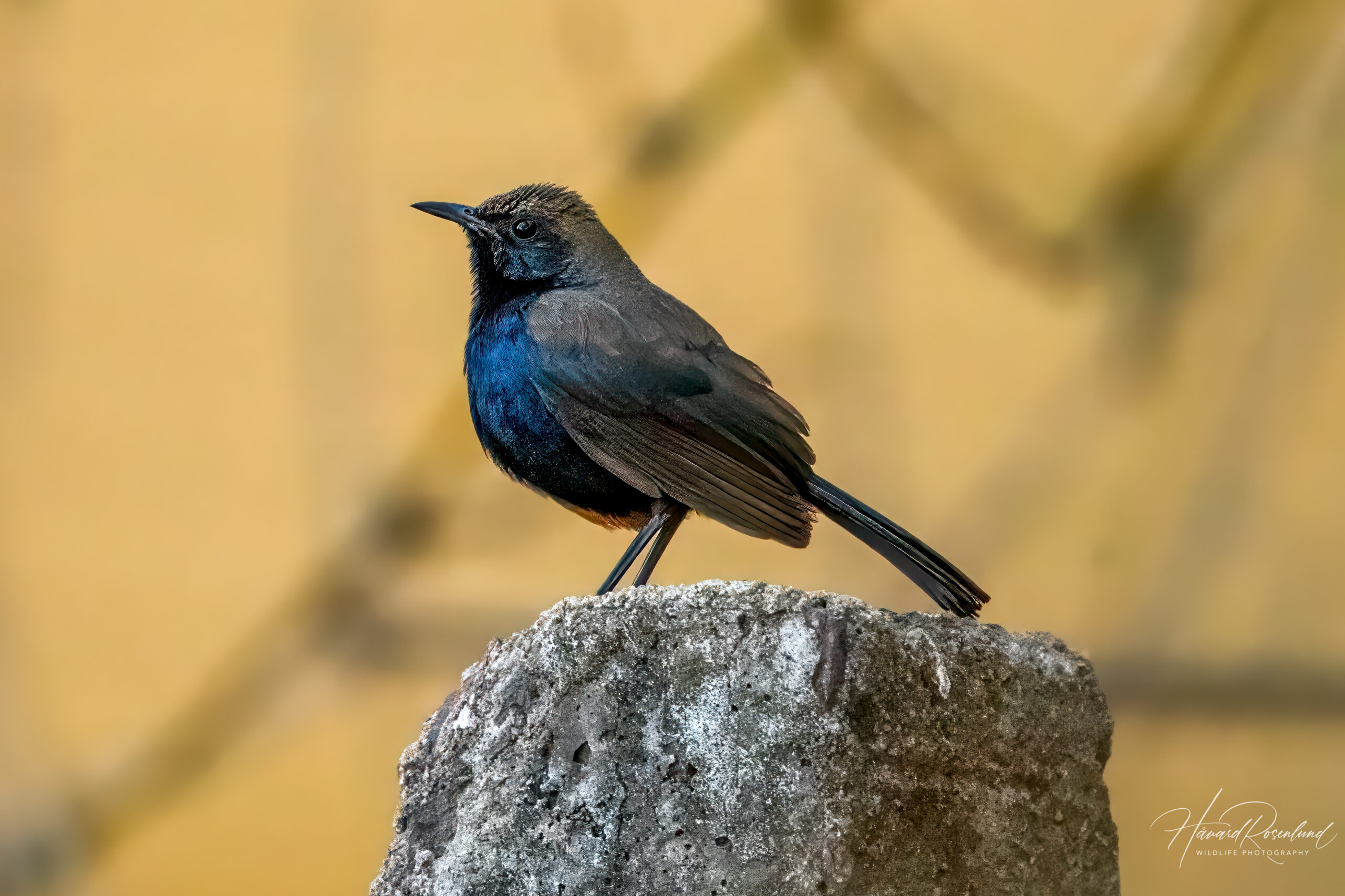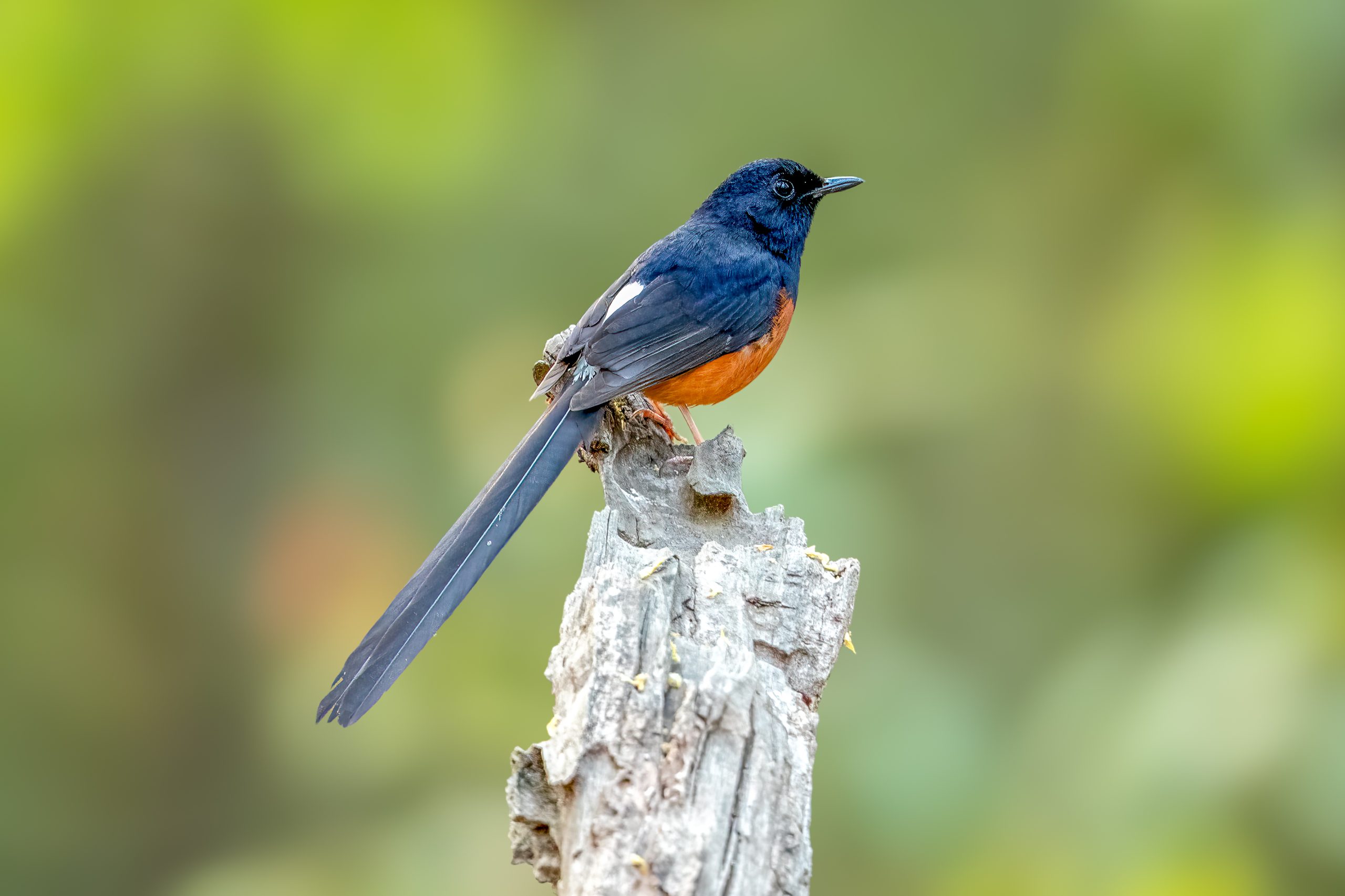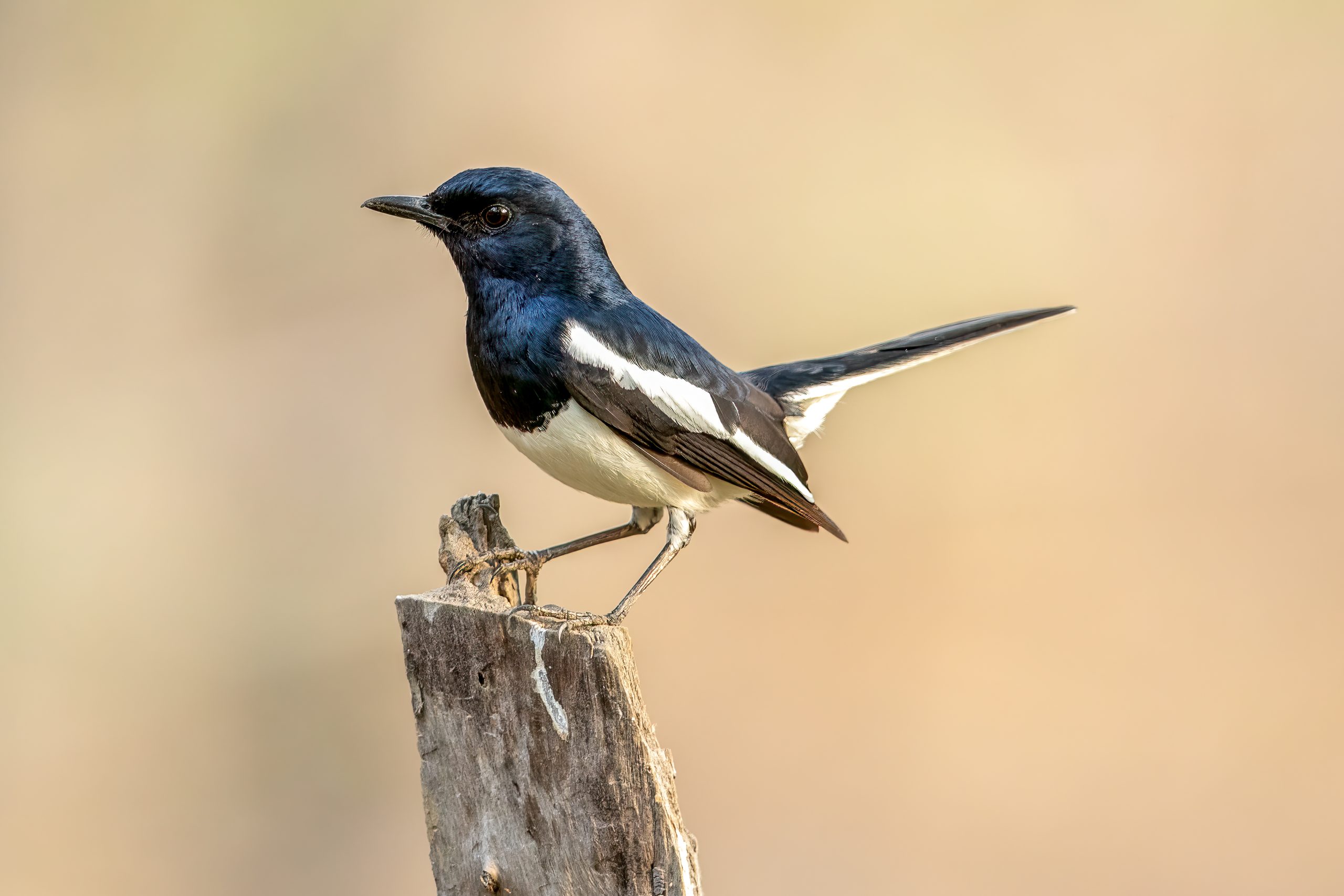Indian Robin
(Copsychus fulicatus)
Description
The Indian robin (Copsychus fulicatus) is a small passerine bird native to the Indian subcontinent, measuring approximately 15-16 cm (5.9-6.3 in) in length. Males are easily identifiable by their dark plumage, a prominent white shoulder patch and chestnut vent. The white shoulder patch is not always visible. Females also have the chestnut vent, but are otherwise drab brown and lack the contrasting white patches. Males of the northern part of the range have a brown back, whereas males of the south are glossy black all over. This species is commonly seen with its tail upright. It is somewhat similar to the Oriental magpie-robin (Copsychus saularis), which has a white belly and vent.
Diet & habitat
Indian robins thrive in a variety of semi-arid habitats, from urban outskirts to open forests and grasslands. They are ground feeders and their diet primarily consists of insects, such as beetles, grasshoppers, and ants. They are also known to consume earthworms and occasionally small fruits. Indian robins are adept at foraging on the ground, often seen hopping along with quick movements in search of food.
Nesting
The breeding season of the Indian robin typically coincides with the onset of the monsoon, ranging from June to September. They are territorial during this time. The nests are cup-shaped, constructed with grass and lined with finer materials, usually built in natural cavities, tree stumps, or even human structures. The female lays a clutch of 3-5 eggs, which she incubates for about 10-14 days. The fledgling period lasts about another two weeks, during which both parents are involved in feeding and caring for the young.
Status
The Indian robin is listed as least concern on the IUCN Red List, reflecting its wide distribution and stable population sizes. It benefits from its adaptability to human-altered landscapes, often thriving in agricultural and urban fringe areas, which provide ample food and nesting opportunities.




